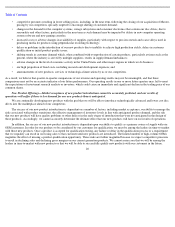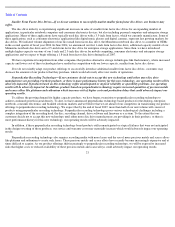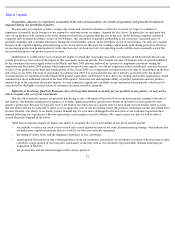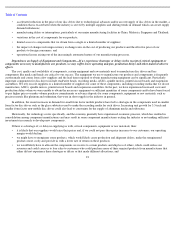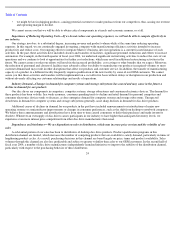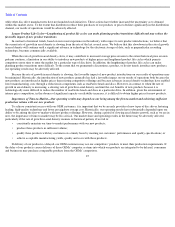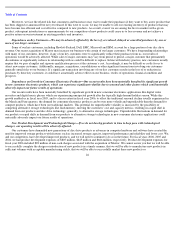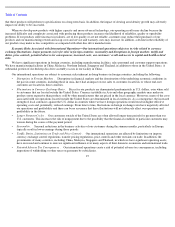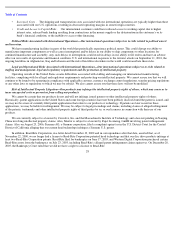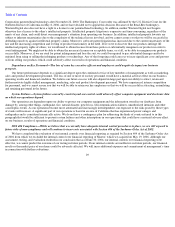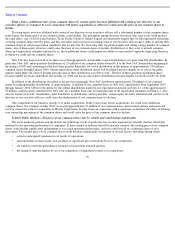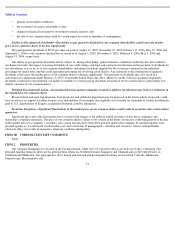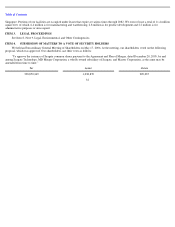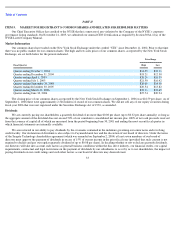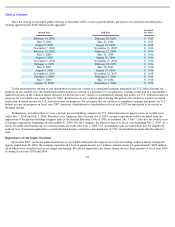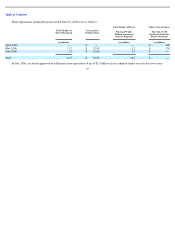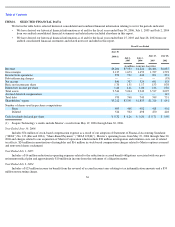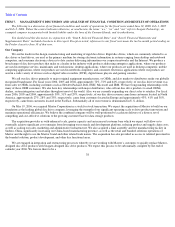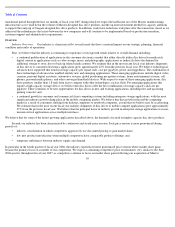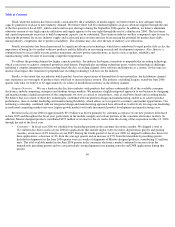Seagate 2005 Annual Report Download - page 32
Download and view the complete annual report
Please find page 32 of the 2005 Seagate annual report below. You can navigate through the pages in the report by either clicking on the pages listed below, or by using the keyword search tool below to find specific information within the annual report.
Table of Contents
Future Sales—Additional sales of our common shares by certain equity investors affiliated with certain of our directors or our
executive officers or issuances by us in connection with future acquisitions or otherwise could cause the price of our common shares to
decline.
If certain equity investors affiliated with certain of our directors or our executive officers sell a substantial number of our common shares
in the future, the market price of our common shares could decline. The perception among investors that these sales may occur could produce
the same effect. Any of Silver Lake Partners, Texas Pacific Group or August Capital can unilaterally require that we file registration statements
covering common shares held by them, and they and other equity investors including some of our executive officers have rights to include their
common shares in certain registration statements that we may file. By exercising their registration rights and selling a large number of common
shares, any of these equity investors could cause the price of our common shares to decline. Furthermore, if they were to include common
shares in a registration statement initiated by us, those additional shares could impair our ability to raise needed capital by depressing the price
at which we could sell our common shares.
New SAC has disposed of all of its shares in us through quarterly and monthly staged distributions to its more than 200 shareholders. In
particular, New SAC made quarterly distributions of 25 million of our common shares owned by it to the New SAC shareholders beginning in
the spring of 2005 and continuing for the next three quarters thereafter, for a total distribution in this manner of approximately 100 million
common shares through January 2006. Absent registration, these distributed shares will be illiquid and not eligible for re-sale in the public
markets under Rule 144 until 12 months from the date of their distribution out of New SAC. The first of these quarterly distributed shares
became eligible for resale under Rule 144 on May 16, 2006 and the second of these distributions became eligible for resale on July 26, 2006.
In addition to the distributions described in the previous paragraph, New SAC distributed approximately 50 million of our common
shares by making monthly distributions of approximately 10 million of our common shares to New SAC shareholders from September 2005
through January 2006. Offers to the public by the selling shareholders named in our registration statement on Form S-3 of the approximately
50 million common shares distributed by New SAC on a monthly basis may be made pursuant to the registration statement on Form S-3. Any
sales by former New SAC shareholders, their transferees or distributees, and in particular, certain equity investors affiliated with certain of our
directors or our executive officers could cause the market price of our common shares to decline.
One component of our business strategy is to make acquisitions. In the event of any future acquisitions, we could issue additional
common shares. For example, in May 2006, we issued approximately 97 million of our common shares and assumed options and nonvested
stock in connection with our acquisition of Maxtor Corporation. Issuing shares in connection with acquisitions would have the effect of diluting
your ownership percentage of the common shares and could cause the price of our common shares to decline.
Volatile Public Markets—The price of our common shares may be volatile and could decline significantly.
The stock market in general, and the market for technology stocks in particular, has recently experienced volatility that has often been
unrelated to the operating performance of companies. If these market or industry-based fluctuations continue, the trading price of our common
shares could decline significantly independent of our actual operating performance, and you could lose all or a substantial part of your
investment. The market price of our common shares could fluctuate significantly in response to several factors, including among others:
•
actual or anticipated variations in our results of operations;
•
announcements of innovations, new products or significant price reductions by us or our competitors;
•
our failure to meet the performance estimates of investment research analysts;
30
•
the timing of announcements by us or our competitors of significant contracts or acquisitions;


